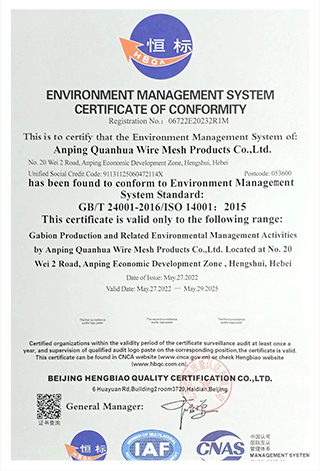Oct . 12, 2024 18:54 Back to list
Essential Guide to Building a Durable Gabion Wall with Detailed Instructions
Creating Optimal Gabion Wall Details A Comprehensive Guide
Gabion walls have become increasingly popular in both landscaping and structural applications due to their versatility, environmental benefits, and aesthetic appeal. These walls, constructed from galvanized steel wire mesh filled with stones, offer stability, drainage, and an appealing natural look. To construct the best gabion wall, attention to detail is paramount. This article delves into the essential details that contribute to an effective gabion wall design.
Material Selection
The first step in creating an optimal gabion wall is selecting the right materials. Gabion baskets are typically made from welded or woven steel wire mesh, commonly galvanized to prevent rust and degradation. When choosing stones for filling, it’s essential to consider both size and type. The stones should be durable and have a consistent size, typically ranging from 3 to 6 inches. Common materials include limestone, granite, and river rocks, as they provide both structural integrity and aesthetic value.
Design and Structural Considerations
The design of the gabion wall is crucial for its longevity and effectiveness.
1. Height and Slope The height of the wall should be determined based on the specific application, whether it is for retaining soil or for decorative purposes. Generally, a height of 3 to 4 feet is ideal for most projects. Additionally, incorporating a slight slope—about 5 to 10 degrees—helps in reducing lateral pressure.
2. Foundation A solid foundation is vital for the performance of a gabion wall. The wall should be built on a properly graded base, ideally compacted gravel or crushed stone. The foundation should extend beyond the base of the wall to distribute weight and prevent erosion.
3. Grouting For added stability, especially in taller walls, consider using a grout or concrete to fill the gaps between stones in the upper layers. This method enhances the wall's resistance to lateral forces.
Drainage Solutions
Proper drainage is essential for any gabion wall to prevent water accumulation, which can lead to structural failure.
1. Permeability Gabion structures naturally allow for water drainage due to their open design. However, it is beneficial to install drainage pipes behind the wall to manage excess water effectively.
best gabion wall detail

Aesthetic Enhancements
Gabion walls can be both functional and visually appealing. There are various ways to enhance the aesthetic aspects of the wall
1. Stone Variety Using different types, colors, and sizes of stones can create a unique and attractive appearance. Mixing natural stones with larger boulders can provide a visually dynamic effect.
2. Plant Integration Integrating plants and vegetation around the gabion wall can soften its look and help with erosion control. Climbing plants can also be trained to grow on the wall, enhancing its natural appearance.
Maintenance Tips
Maintaining gabion walls ensures their long-term performance
1. Regular Inspections Periodic inspections should be conducted to check for any signs of displacement, erosion, or damage.
2. Weed Control Keeping the area around the wall clear of weeds and other vegetation helps maintain its stability and appearance.
3. Prompt Repairs Any damage or shifting should be addressed immediately to prevent more extensive issues down the line.
Conclusion
Incorporating these details into the design and construction of a gabion wall will lead to a robust, efficient, and aesthetically pleasing structure. From selecting the right materials to ensuring proper drainage and maintenance, each step is critical to the wall's success. Whether for decorative landscaping, soil retention, or erosion control, a well-designed gabion wall stands the test of time and nature, offering a practical solution coupled with natural beauty. By following best practices and paying close attention to detail, one can achieve the best gabion wall outcomes for any project.
-
Why PVC Coated Gabion Mattress Is the Best Solution for Long-Term Erosion Control
NewsMay.23,2025
-
Gabion Wire Mesh: The Reinforced Solution for Modern Construction and Landscape Design
NewsMay.23,2025
-
Gabion Wall: The Flexible, Seismic-Resistant Solution for Modern Landscaping and Construction
NewsMay.23,2025
-
Gabion Wall Solutions: The Durable, Decorative, and Affordable Choice for Every Landscape
NewsMay.23,2025
-
Gabion Basket: The Durable and Flexible Alternative to Traditional Retaining Walls
NewsMay.23,2025
-
Gabion Basket: The Proven Solution for Slope Stability and Flood Control
NewsMay.23,2025
-
Versatility of Chain Link Fence Gabion
NewsMay.13,2025






